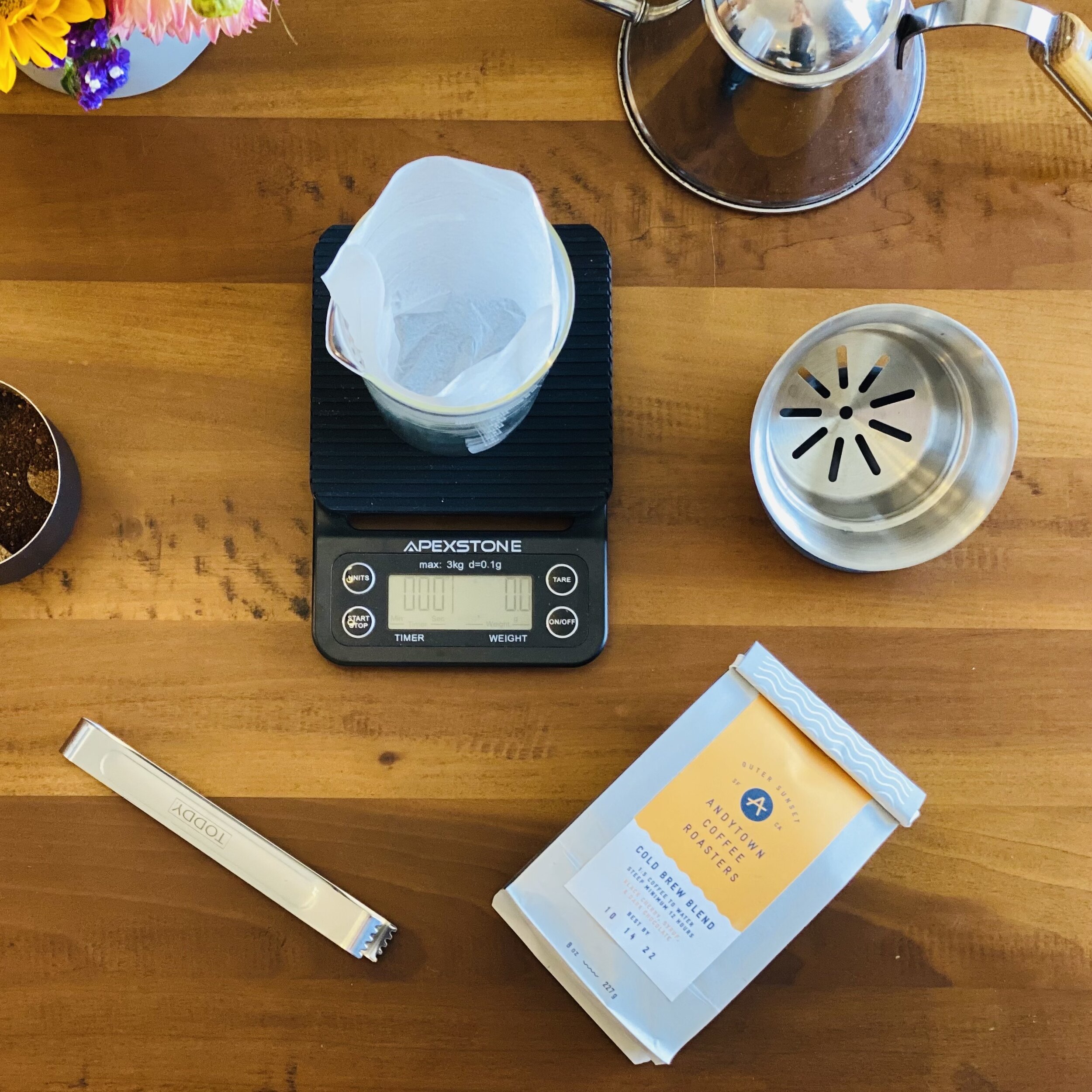Determining how much coffee to roast every week is a never ending numbers game. Our cafes need to anticipate how much coffee will be used to make beverages and guess how many bags of beans customers will buy, all while considering what time of the year it is, if a holiday is around the corner, and whether or not Karl the Fog’s disappearance–or reappearance–will affect how many people will greet us at our door. At the roastery, we have to make sure we roast enough coffee to meet orders from our wholesale partners, online customers, and have a little extra in case of emergencies. However, having a little more than just enough and not creating an exorbitant amount of excess is easier said than done.
We’ve done a pretty good job at keeping our coffee waste at a minimum, but from time to time we still accumulate a little bit of coffee that we feel is no longer fit for espresso, drip, or iced coffee. And we hate creating waste and throwing away coffee. There is too much effort that goes into growing, harvesting, shipping, testing, roasting, and serving coffee that tossing it is simply not an option. So, what can we do with aging coffee?
There is an unfortunate myth that only the freshest beans make the best coffee drink, and that anything brewed a few weeks past roast date is not fit for consumption. This couldn’t be anything farther from the truth. Through experimentation, coffee professionals have figured out that by adjusting grind size, coffee to water ratio, and water temperature, one can still produce a tasty cup. And through experimentation, the cold brew method has become a popular choice for its ease in preparation and ability to brew a robust, less acidic, and smooth coffee. If fresh roasted coffee is best for bringing out the brightest flavors, then aged coffee is best for balancing out acidity and enhancing deep flavors.
When we decided to start serving cold brew in our shops, we wanted to make sure that what we have on hand is consistent. We never really know how much excess of each coffee we’ll have once a coffee is past its prime on the coffee bar, so we experimented in mixing blends with single origins, tested brewing ratios and brewing periods. In our R&D process, we found that mixing blends and single origins allow for a hint of fruit flavor to come through while chocolatey notes stand through as the base flavor. Our sweet spot for brewing is 1:5 to 1:6 coffee to water ratio, steeped for 18-22 hours, and diluted with a little bit of water before serving. We do this to create a drink that has the rich, chocolatey qualities that we love about cold brew, but is a little easier to drink because of the added water. Cold brew in the cafes has been really popular, especially during hot days! We’ve had a handful of customers reach out to us and ask if we’ll ever sell cold brew beans… well, ask and you shall receive! Because our cold brew project is a result of trying to find a solution to preventing waste, we may not always have bags of cold brew available for purchase. But we’re happy that we can still share these beans with those of you who enjoy making cold brew at home!
SUGGESTIONS FOR MAKING COLD BREW AT HOME
Our device of choice for home brewing is the Toddy Artisan Small Batch Cold Brewer. It’s compact, elegant, and great for making small amounts so it doesn’t take up too much space in the fridge!
Coffee to Water Ratio
We like making a concentrate for its versatility. For a 1:5 ratio, use 80g of coarsely ground coffee (similar to coarse sea salt) to 400g room temperature water.
Brewing Time
After pouring water directly over the coffee grounds in the filter, gently stir the slurry to ensure that all coffee grounds are wet. Twist the filter at the top and place the lid over the container. Let the coffee steep at room temperature for a minimum of 12 hours, but no more than 24. The longer the brew, the greater the flavor intensity of the concentrate. Curious about caffeine level? So are we! While we don’t have the proper equipment in order to measure how much caffeine is extracted, we can generally assume that the longer time frame brewing allows for more caffeine extraction as well.
Steep the coffee grounds for 12-24 hours. The longer you brew, the stronger the flavor!
Storage
Once you’ve filtered out the coffee grounds, you can store the concentrate in the refrigerator for up to two weeks.
Serving
For a brisk coffee that’s best for sipping, serve the concentrate over ice in a rocks glass. When served in this fashion, it’s syrupy with notes of black cherry and dark chocolate.
If you’d like a drink made for taking bigger sips, you can dilute the cold brew concentrate with either water or your choice of milk and serve it over ice. Start with a 1:1 ratio. If you want more coffee flavor and a caffeine kick, use more concentrate!


